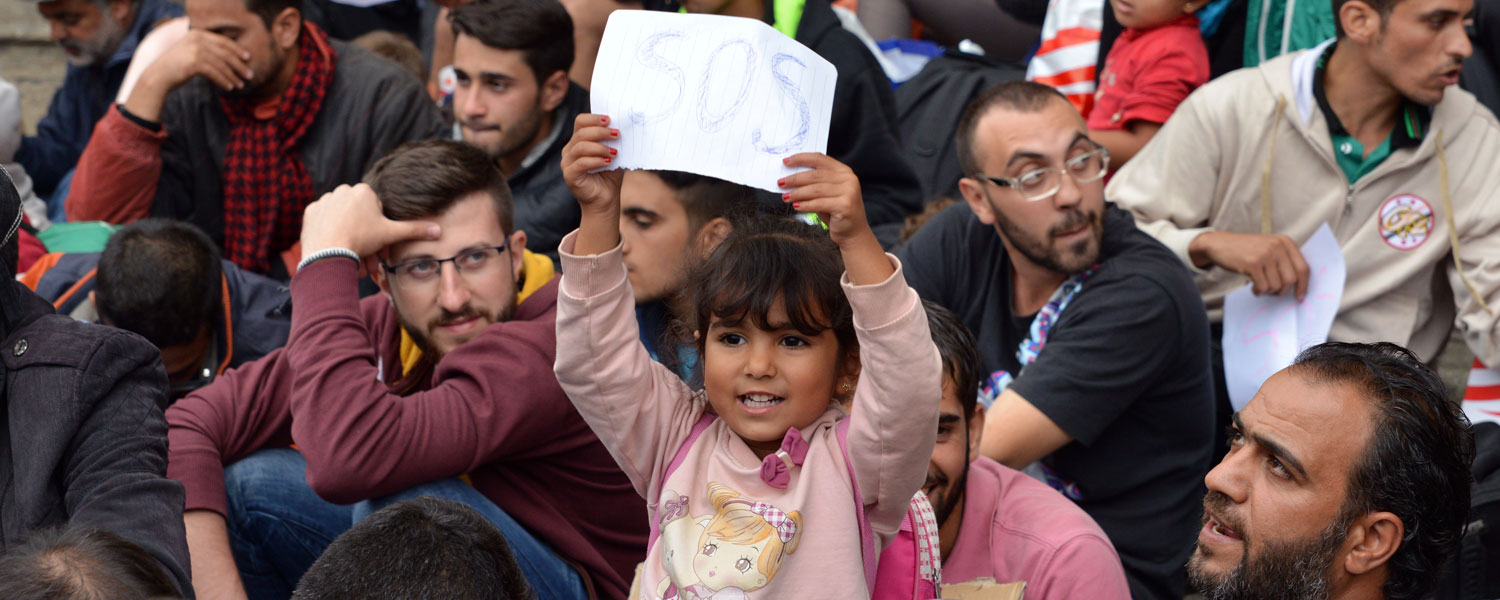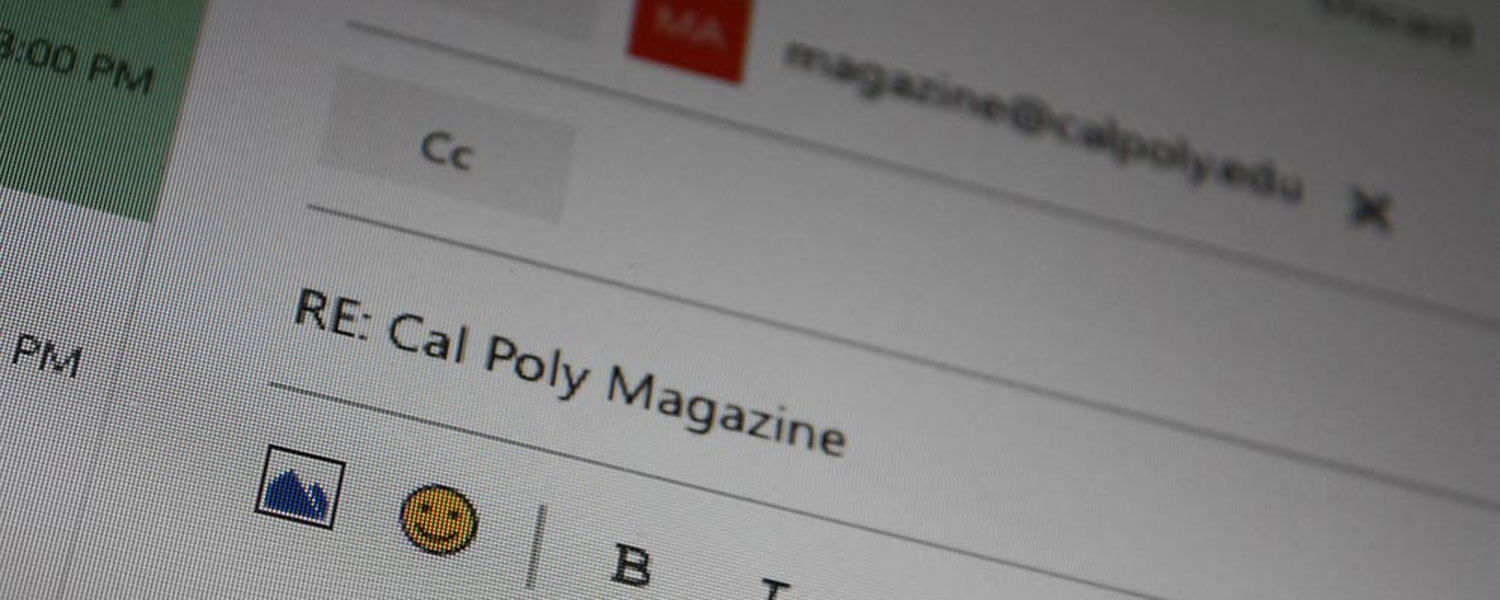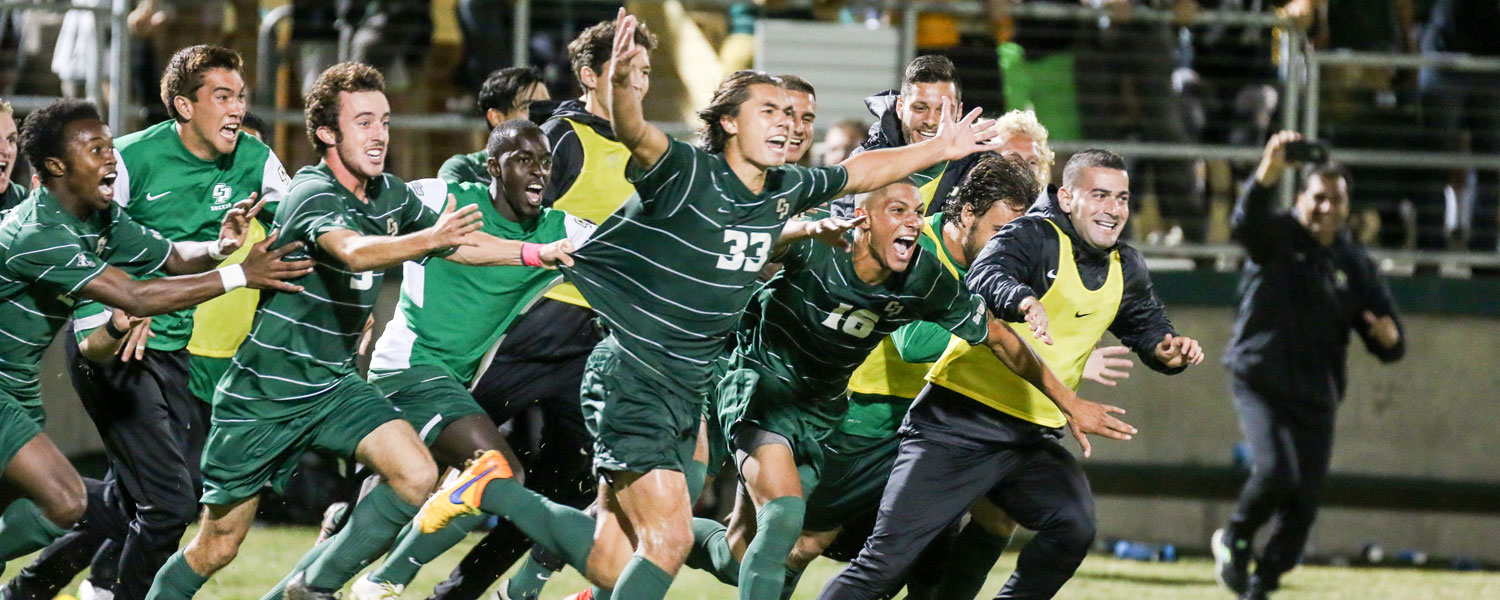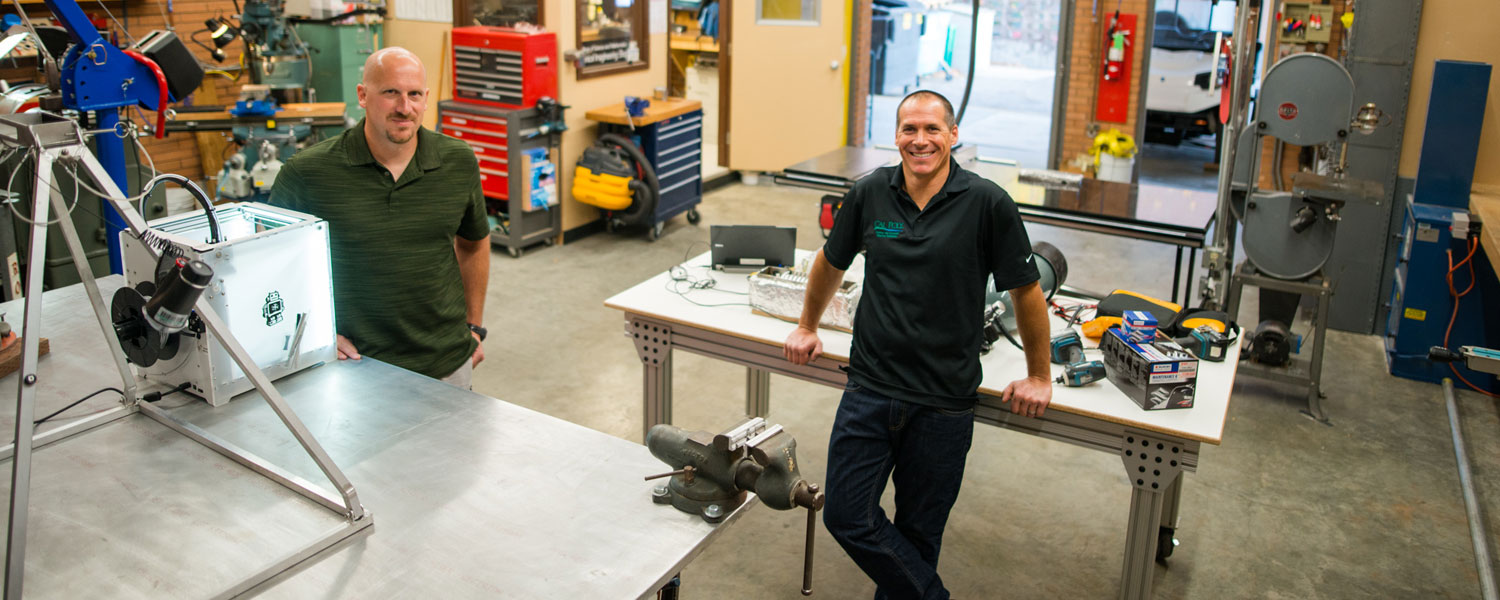Parallax
Seeking Shelter
Interview by Rachel Ellersieck

The past year has seen massive migrations across the world as refugees seek sanctuary from civil wars and violence in Syria and Afghanistan. Large movements of people can lead to major changes in the societies they join, and debates have raged from Europe to the United States on how to deal with these changes. We asked two Cal Poly faculty members to discuss what’s happening and what’s at stake.
Cameron Jones is a lecturer in the History Department, specializing in Latin America and the history of religion. Thien-Huong Ninh, a lecturer in the Social Sciences Department, studies international migrations and ethnic and religious diasporas. Born in Vietnam, she came to the United States as a refugee herself.
Cal Poly Magazine: What is happening right now to cause a refugee crisis?
Jones: The Syrian civil war started in 2011 when protests against the Assad regime were met with a lot of government violence. Eventually the violence devolved into a civil war. Now the Syrian government is fighting several factions, and on top of that, Daesh or ISIS or ISIL is pushing into Syrian territory. This has caused more than 250,000 deaths and displaced approximately 11 million people — 7 million internally and 4 million externally. Up to 1 million people fled to Europe, and the rest are displaced in the countries immediately surrounding Syria.
What are the similarities between the current crisis and past crises?
Jones: There have been several refugee crises over the last several hundred years. Most of them have been caused by conflict. That is similar to what’s happening today.
What’s different is globalization. People are more aware of the refugee situation because information is so global. A lot of refugee crises weren’t as widely known, and refugees were quietly placed in various countries and lived their lives peacefully. Globalization has also made everyone much more aware of the disparity in wealth throughout the world. So in addition to the conflict in Syria, people from all across the Middle East are moving for economic reasons. Technically these individuals aren’t refugees, but separating those escaping political strife from those escaping economic strife is complicated.
Ninh: Another big difference is the “war on terror.” People worry some refugees may be terrorists who will come to our country to create propaganda or to kill people within our borders.
What factors has the government considered or should they consider when developing policy?
Jones: Historically the U.S. has been very good at accepting refugees who bolster national ideology. For example, we took in 700,000 Cuban refugees between 1959 and 1980. The number was so large because it supported our anti-communist identity.
Economic factors are also considered, but with the largest economy in the world, that’s not much of a problem for the U.S. To mitigate economic concerns, the Refugee Act of 1980 limited the number of refugees to 50,000 per year, which at the time was one for every 4,000 U.S. citizens. Today all 4 million refugees from Syria would make up about one percent of the U.S. population. So the U.S. could take on a lot before the economy was really affected.
Security has become the biggest issue; however, a lot of the concerns don’t take into consideration some of the more gaping holes in security. For instance, all of the Paris attackers held European passports. They easily could have travelled to the U.S. on the visa waiver program. They wouldn’t have needed a refugee program. They could have used their French and Belgian passports to come into the U.S. But nobody would want to get rid of the visa waiver program because it brings a lot of tourism to the U.S. In comparison, the process of coming into the U.S. as a refugee is quite rigorous in regard to security. They go through various checks, through multiple agencies, and it is really hard to pass those checks if there is any sort of security question.
What are some arguments and concerns against accepting refugees?
Ninh: It’s an expense, it’s time-consuming, it takes a lot of resources, and not every citizen or lawmaker will like it. People may wonder why we need to help another group when we have poverty ourselves, and we’re already strained. Another issue is integration. I think the underlying question is the refugees’ loyalty. Can they actually become American?
As Cameron mentioned, many of the people who committed the crimes in Paris were born in European countries that took in their parents. Yet they turned against their own countries. So this raises a concern about how long it takes to integrate. Also, the public may rally behind the purpose of accepting refugees at first, but may retreat later. Cold War refugees were welcomed at first, but after the Cold War ended and disappeared from the political agenda, the public turned against many of these groups. So the government needs to consider the long-term affects on our communities and our country.
What options does the U.S. have right now? And what are the outcomes?
Jones: The existing law, the Refugee Act of 1980, allows the U.S. to bring in 50,000 refugees each year. However, Congress is currently trying to block this law from being used. We could refuse all refugees and allow other countries to absorb the numbers. This option would land most of them in their neighboring countries, which could turn into permanent camps that are dependent on the U.N. In the past, that’s resulted in negative outcomes, including fostering extremist activities. The option the Obama administration is considering is to accept 20,000 to 30,000 refugees, which would help, but a larger international effort is needed.
How have influxes of refugees and immigration affected Europe over the past generation? What lessons can the U.S. learn from watching Europe?
Ninh: We are increasingly all very connected. And if immigrants or refugees don’t feel they belong locally, globalization allows them to seek brotherhood or sisterhood elsewhere. Unfortunately, this could lead to their joining terrorist groups.
I believe this is what happened in Paris. They were educated people in their 20s and 30s, living in France and Belgium, and speaking the language fluently. They seemed to be assimilated, but perhaps they didn’t feel they belonged. And as a result, ISIS could recruit them. It’s pretty powerful that a group could offer a sense of belonging strong enough to convince someone to die for it. As a sociologist, this fascinates me, but I think we all need to reflect and look at the situation holistically.
The U.S. already has people coming from all over the world. So when developing refugee resettlement policies, we could consider reaching out to the communities that have connections to the homeland of the refugees seeking asylum in the U.S. They might provide resources that could help in the transition process. Secondly, the government could engage the communities already in the U.S. to feel like they can participate in the refugee program, be part of the process, and not just pushed aside as new people assimilate.
Dr. Ninh, what other sociological concepts do you see at play right now?
Ninh: Some scholars argue Islam is being racialized right now. Of course, Islam is not a race, but certain physical characteristics have been assigned to the religion. According to the Pew Research Center, Muslims in the U.S. are extremely racially diverse, but what some refer to as a “controlling image” has developed. As a result, we associate Islam with a certain imagined physical look or racial characteristics. The media, politicians and various other sources create this image. Whoever controls the image gets to tell the receiver what the image means, which can be very powerful.
As a refugee yourself, do you think there is anything missing from the national conversation about refugees?
Ninh: One thing more complicated than people realize is national versus ethnic identity. For example, when ethnic Vietnamese who had been living in Cambodia for generations fled the Pol Pot regime, they fled to Thailand and Vietnam because they were the two nearest countries. However, when they arrived in Vietnam, the U.N. didn’t consider them refugees. They considered them returning citizens and didn’t provide much assistance to them.
So the question is, at what point do these groups become part of their new country and not part of their homeland? Do they even have the option to change?
What do you think are the great risks and opportunities we have at this moment?
Jones: The U.S. doesn’t have the best reputation in the Middle East. Helping the refugee population is our opportunity to build a little goodwill and perhaps avoid more conflict in the future. We could be seen as a country that can help relieve suffering, and we could maybe strengthen our relationship with the populace in the region. This could help us combat groups like Daesh and others going forward.
Ninh: It’s also an opportunity for us to reflect on who we are as Americans. How can we encourage balanced conversation that doesn’t create animosity or hostility between two perspectives that may seem ideologically opposed? Can we have a conversation in which you can express your opinion about a certain group and also be willing to understand them and relate to them?





